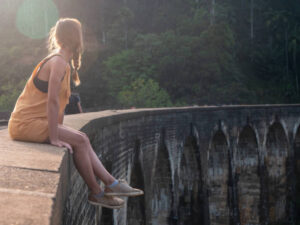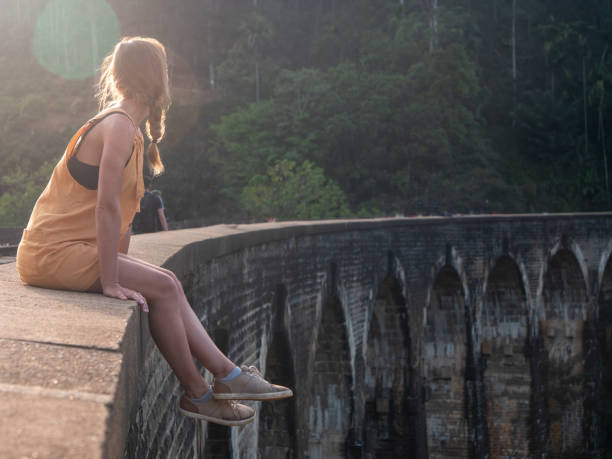
He looked out over the water for along time before he answered. “It’s an edge,” he said at last. “It is a high place with a chance of falling. Things are more easily seen from edges. Danger rouses the sleeping mind. It makes some things clear. Seeing things is a part of being a namer.
Few would fault you if you couldn’t place the above quote. For as much as The KingKiller Chronicles has achieved a cult like following among those of us who love the fantasy genre of literature, its still a good deal away from piercing the barrier into pop culture. (Although Lin Manuel Maranda did nearly adapt the source material into a TV show a few years back, though it eventually fell apart before prouduction).
The passage of note features the hero of the story, Kvothe, receiving one last lesson from his enigmatic, eccentric, mischievous, and wise mentor figure Elodin, before he departs on his next adventure. Elodin invites him to sit next to him on the lip of a stone bridge and dangle his feet over a 100 foot drop to the river below. Sitting on the edge of the bridge, in that high place, Elodin gives Kvothe some parting words he, as with the rest of us, need to hear.
Edges and high places make things clear for us. In case you’re tempted to disregard this as merely an attempt at poetic musings written for nerdy fantasy readers. I’d like to draw your attention to this meta-analysis published in the Journal Frontiers in Public Health: Is altitude a determinant of the health benefits of nature exposure?
After reviewing 27 peer-reviewed published studies, the authors declare, “Overall, we found that altitude was significantly associated with alleviation of negative emotions and increase in physiological relaxation. Regarding negative emotions, anxiety, depression, confusion, and fatigue had a significant positive quadratic association with altitude, which implied that the alleviation of negative emotion concurrently increased” (Kim et al. 2022; p. 21).
So what is it about gazing into a vast landscape from a high place that is so helpful? In the book, Elodin calls the place they’re sitting an edge, and for us I think this word can be looked at both literally and metaphorically. When we take ourselves to the edge of a cliff, or a look out point, or in the case of the book: a bridge, we are also brought to the edge of safety, the edge of earth, the edge of the mundane. Our fear of the height is distinct from our anxieties that incapacitate our ability to think and decide, and it rouses our sleeping minds to wake up and to see our circumstances in proper perspective.
We as humans have been writing about this experience of being in high places for thousands of years. In the collection of Jewish literature known as the Nevi’im, the poet/prophet Habakkuk writes, “Make my feet like hinds feet, set me on high places.” Yet in modernity with all our comforts we risk losing this connection to edges, when the mind quiets as the wind hums past us. Danger whispers truths we ignore in comfort— and reminds us that we are capable of standing steady even at the brink.
So maybe there’s a high place with an edge waiting for you nearby. It could be a naturally occurring edge like a hillside, a pleateau, or a cliff. Or maybe like Elodin and Kvothe its something manmade like a bridge or a skyscraper. If you happen to find yourself in some form or fashion lost or confused and in need of clarity or perspective, consider taking yourself to an edge at a high place, above the fog of petty distractions. You might just find what you need to step back down into your life with steadier footing and a wider perspective.

